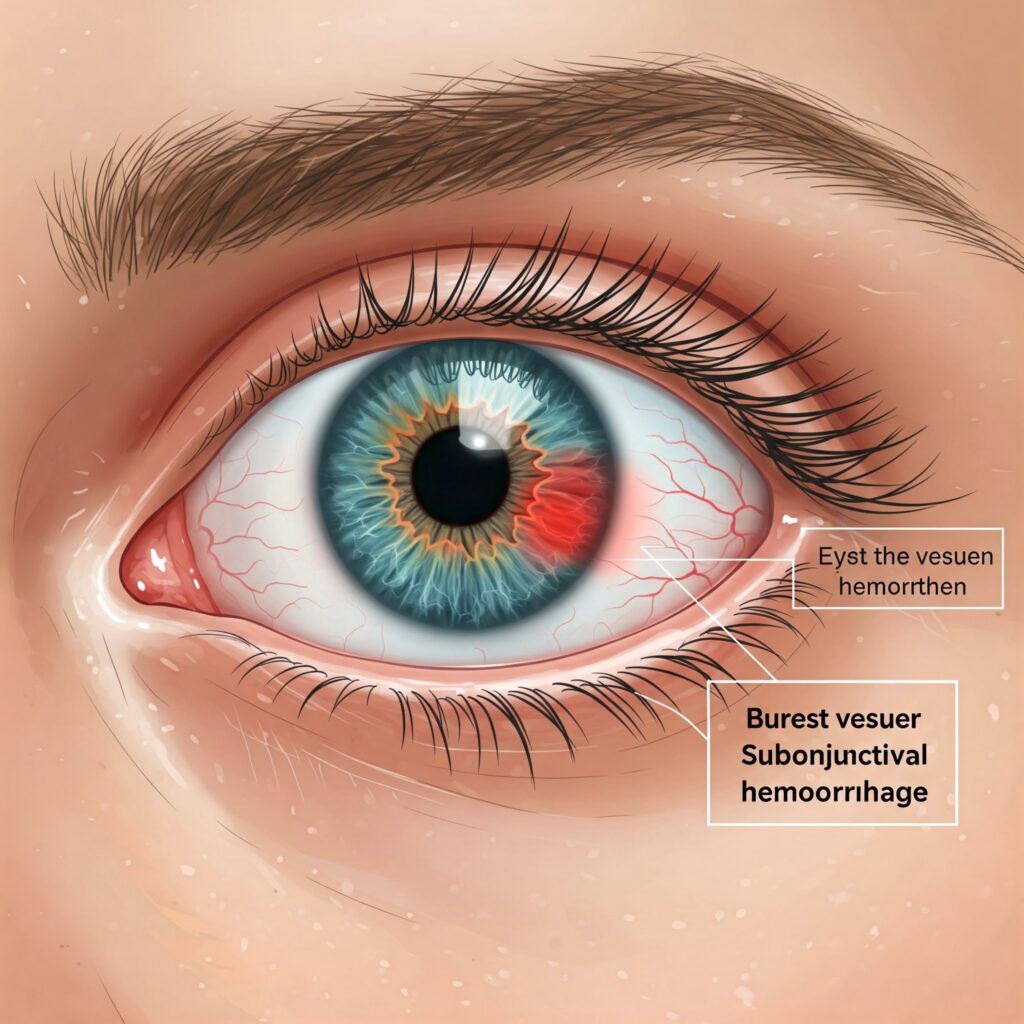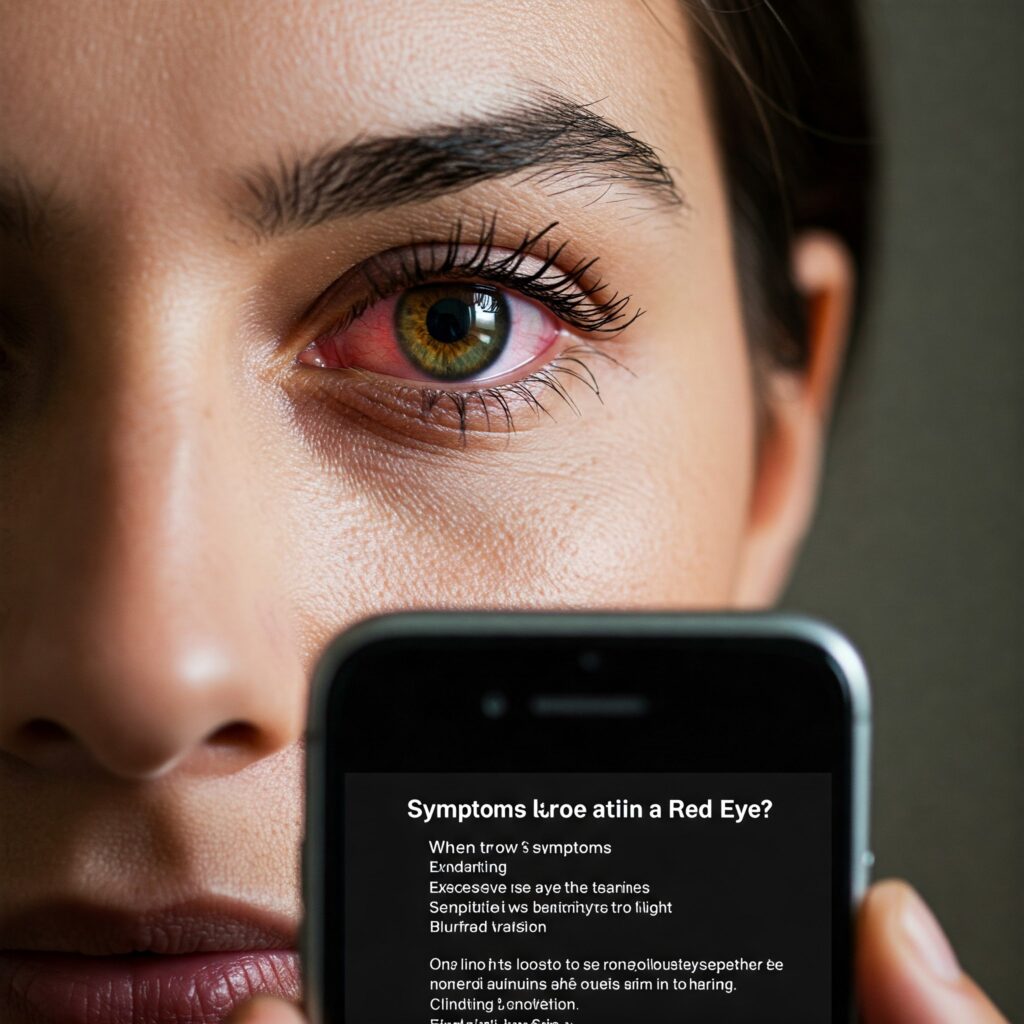Red eye causes can catch you off guard—waking up with bloodshot eyes or noticing sudden irritation in the mirror. But what really causes this change in the appearance of our eyes? In this in-depth guide, we’ll uncover the 27 major red eye causes, from common irritants to serious medical conditions. Whether you’re a curious reader or dealing with symptoms, this post offers a clear understanding of what’s going on.

What Is Red Eye?
“Red eye” is a general term that describes an eye that appears red due to inflammation, irritation, or dilated blood vessels on the surface of the eye. It may be accompanied by other symptoms like itching, burning, discharge, pain, or blurry vision.
Understanding the underlying red eye causes is essential for getting the right treatment and preventing complications.
Why Identifying Red Eye Causes Matters
Some red eye causes are harmless and go away on their own, but others can be a warning sign of a more serious condition. If left untreated, certain causes of red eyes can lead to vision loss or long-term eye damage. That’s why it’s important to identify the exact reason behind your symptoms.
27 Major Red Eye Causes
Let’s explore the most common, overlooked, and serious reasons why your eyes may turn red.
1. Allergic Conjunctivitis
One of the most frequent red eye causes, allergic conjunctivitis results from allergens like pollen, dust, pet dander, or mold. It leads to redness, itching, tearing, and swelling.
2. Viral Conjunctivitis
Commonly known as “pink eye,” this highly contagious infection is a leading reason behind red eyes. It often spreads through hand-to-eye contact and can accompany cold symptoms.
3. Bacterial Conjunctivitis
A bacterial infection in the eye can cause redness, thick yellow or green discharge, and sticky eyelids. It’s common in children and may need antibiotic drops.
4. Dry Eyes
Lack of adequate lubrication or tear production leads to eye dryness—a major red eye cause in screen users and older adults. It may also feel like burning or a gritty sensation.
5. Contact Lens Irritation
Over-wearing lenses or poor hygiene can cause red, irritated eyes. Sleeping in lenses is a major risk factor for infection and corneal damage.

6. Eye Fatigue (Digital Eye Strain)
Spending too much time staring at screens reduces blinking, leading to dryness and red eyes. It’s a modern-day epidemic known as “computer vision syndrome.”
7. Blepharitis
Inflammation of the eyelid margins causes red, crusty, and irritated eyes. Blepharitis is one of the chronic red eye causes and often linked with dandruff or skin conditions.
8. Foreign Body in the Eye
Dust, metal, sand, or any small object in the eye can cause trauma and redness. Never rub the eye, and flush it out gently or seek professional help.
9. Subconjunctival Hemorrhage
A broken blood vessel beneath the conjunctiva causes a bright red patch in the eye. Though scary-looking, it’s usually harmless and resolves on its own.
10. Corneal Abrasion
A scratch on the cornea—often from fingernails, lenses, or debris—leads to sudden pain, redness, tearing, and light sensitivity.

11. Uveitis
Inflammation inside the eye (the uvea) is a serious condition that can cause pain, blurred vision, and intense redness. Autoimmune diseases are often involved.
12. Glaucoma (Acute Angle-Closure Type)
One of the most dangerous red eye causes, acute glaucoma leads to a red, painful eye with blurred vision, nausea, and halos. It requires emergency treatment to save vision.
13. Keratitis
An infection or inflammation of the cornea that causes redness, pain, discharge, and sometimes vision loss. Can be viral, bacterial, or fungal.
14. Environmental Irritants
Smoke, strong perfumes, chlorine from pools, or polluted air can all irritate the eyes and cause temporary redness.
15. Eye Trauma
Any blunt or penetrating injury to the eye can result in redness, swelling, and potentially serious internal damage
16. Iritis
Inflammation of the iris leads to redness, pain, and photophobia. Like uveitis, it may signal autoimmune issues or infections.
17. Chemical Exposure
Accidental exposure to household cleaners or acidic/alkaline substances can cause chemical burns, leading to severe red eye.

18. Stye or Chalazion
A stye is a painful, red bump on the eyelid from an infected oil gland, while a chalazion is a blocked gland. Both can cause localized redness and irritation.
19. Eye Allergies from Cosmetics
Makeup, eye creams, and even contact lens solutions may contain allergens or preservatives that irritate the eyes.
20. Ocular Rosacea
A skin condition that affects the eyes, causing redness, swelling, burning, and a gritty sensation. It often accompanies facial rosacea.
21. Smoking and Secondhand Smoke
Tobacco smoke is one of the most overlooked red eye causes. It dries out and inflames the eyes, especially in enclosed spaces.
22. High Blood Pressure
Hypertension can lead to burst blood vessels in the eye (subconjunctival hemorrhage), which appears as a bright red spot

23. Sinus Infections
Sinus pressure and inflammation can cause pain and redness around the eyes, sometimes mimicking eye infections.
24. Alcohol Consumption
Alcohol dilates blood vessels in the eye, making them more visible and leading to red eyes the next day.
25. Insufficient Sleep
Lack of sleep causes eye fatigue, dryness, and visible redness due to dilated blood vessels.
26. Use of Eye Drops (Rebound Redness)
Ironically, overuse of “get-the-red-out” eye drops can cause rebound redness, making the condition worse over time.
27. Autoimmune Diseases (e.g., Lupus, RA, Sjogren’s)
Autoimmune disorders can inflame various eye structures, leading to chronic redness, pain, and sometimes vision changes.
When to See a Doctor
Not all red eyes are equal. See a healthcare provider immediately if you have:
- Severe pain
- Vision loss or blurry vision
- Light sensitivity
- Green or yellow discharge
- History of trauma
- Contact lens use with redness
These signs could indicate a more serious condition needing urgent treatment.

How Red Eye Causes Are Diagnosed
To determine the red eye causes, your optometrist or ophthalmologist will:
- Take a detailed medical history
- Perform a slit-lamp examination
- Use fluorescein dye to check for abrasions
- Check eye pressure (for glaucoma)
- Evaluate for signs of infection or inflammation
Sometimes, blood tests or imaging may be needed if autoimmune or systemic conditions are suspected.
Preventing Common Red Eye Causes
While not all causes are preventable, you can reduce your risk by:
- Practicing good hygiene
- Avoiding allergen exposure
- Wearing protective eyewear
- Taking screen breaks
- Keeping your lenses clean
- Using preservative-free lubricating drops
- Avoiding smoking or secondhand smoke
Red eyes can be annoying, uncomfortable, or even alarming. Knowing the 27 major red eye causes empowers you to take charge of your eye health. From everyday irritants to hidden medical threats, each cause has its own story—and proper care starts with understanding that story.
If you’re frequently experiencing red eyes, don’t ignore it. Whether it’s dry eye, allergies, or something more serious, early diagnosis is key.
Q1: What are the most common red eye causes?
Common red eye causes include allergies, infections like conjunctivitis, dry eyes, and contact lens irritation.
Q2: Can lack of sleep cause red eyes?
Yes, sleep deprivation is one of the minor but noticeable red eye causes due to eye strain and dryness.
Q3: Is red eye always a sign of infection?
No, red eyes can result from allergies, dryness, or irritation—not just infections.
Q4: How do I know if my red eye is serious?
If red eye is accompanied by pain, vision changes, or discharge, it could be a serious condition and needs medical attention.
